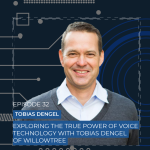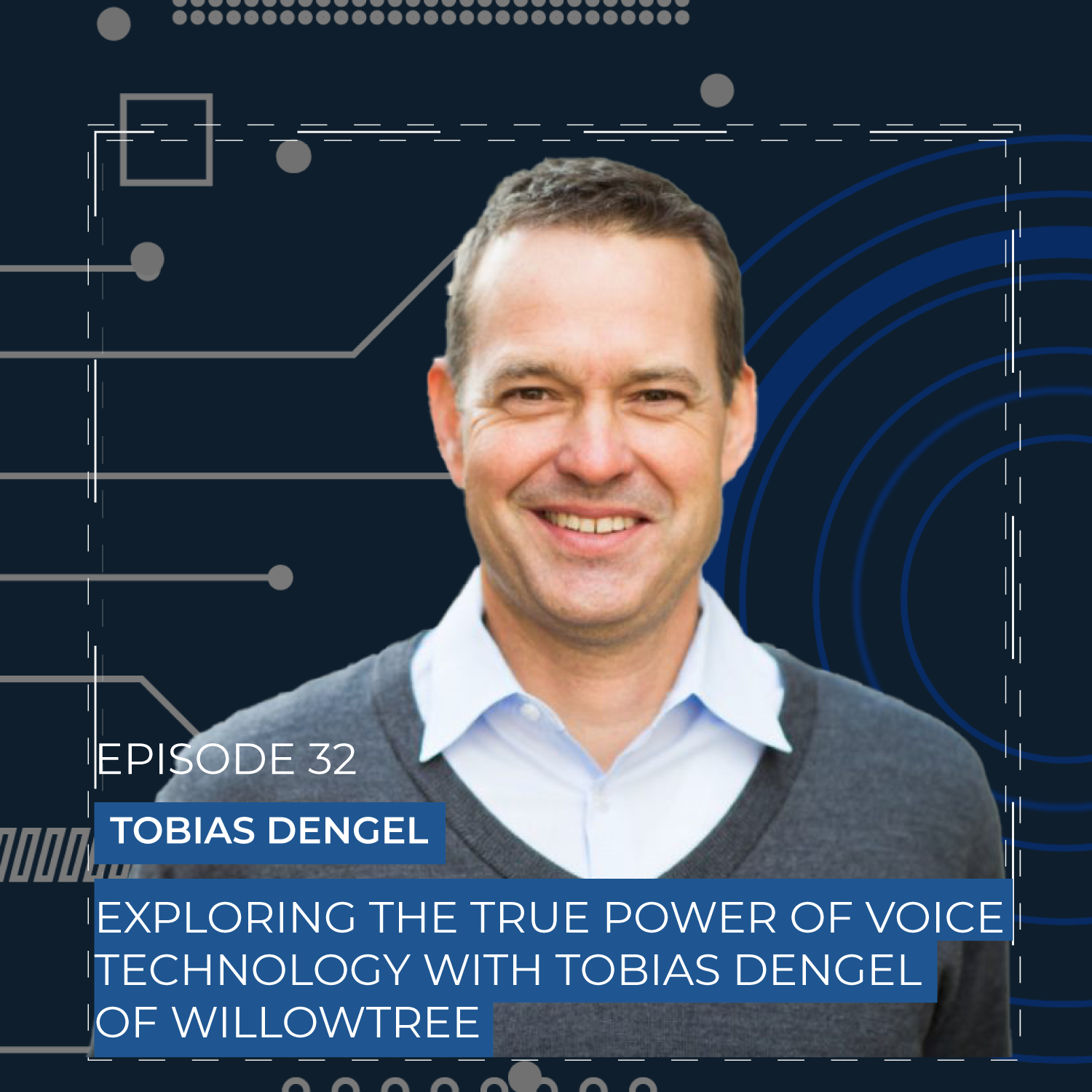
There’s an ongoing discussion about the potential of voice technology and whether it’s really as revolutionary as we thought it to be. The answer is yes—it’s a matter of exploring its unique potential, not just copying existing technologies.
Tobias Dengel, a technology leader and author of a book about voice technology, joins us today in the new episode of the Scaling Tech podcast. Tobias is the President at WillowTree, a leading mobile strategy, design, and app development company servicing Fortune 500/5000 clients and large government agencies. He’s also the author of The Sound of the Future: The Coming Age of Voice Technology, which illustrates how voice technology is set to transform business operations across industries.
In this episode, we discuss why voice technology works best with a multimodal approach, how voice commands can transform user interactions, and the complexities of building trust with AI and voice models.
Tune in to discover how voice interfaces combined with AI can bring significant value to your users and your organization. And keep following the Scaling Tech podcast where your host, Arin Sime, brings industry experts to help your growing software engineering team stay ahead in the rapidly evolving tech space.
ABOUT GUEST
Name: Tobias Dengel
What he does: He’s the President at WillowTree, a leading mobile strategy, design, and app development company servicing Fortune 500/5000 clients and large government agencies.
Company: WillowTree
Noteworthy: He’s a seasoned technology executive with 20+ years of experience in mobility, digital media, and interactive marketing.
Where to find Tobias: ![]() / LinkedIn
/ LinkedIn
KEY INSIGHTS
⚡We’re not using voice technology to its full potential. Attempting to emulate existing technologies only limits the transformative potential of voice. Tobias says, “The question you ask is, ‘Well, great, why hasn’t it changed the world yet?’ The answer is we’re not using it right. And as an industry, we have made the classic mistake that we all make with new technologies is that we try to simulate or emulate a technology that already exists or something that already exists. […] We’ve tried to simulate human conversation, which is a natural thing to do. You say, ‘Okay, I got voice. Let’s simulate human conversation.’ But that’s actually not the best use.”
⚡Voice technology works best with a multimodal approach. Voice technology is most effective when combined with other interfaces. By working together, voice and software teams can create the fastest and most efficient interactions. This approach improves real-time communication and overall efficiency. Tobias explains the multimodal mindset, “I think the most interesting thing that’s going on from an efficiency standpoint, when you think about this multimodal, is that when you are saying something to device, the transcription is happening, and you’re showing the user this transcription and in the background, the app is like, if you’re doing a fast food order, building the order, you’re going from call and response, you’re going to concurrent communication for really the first time ever is that you’re communicating and the machine’s reacting multimodally in a real way. That’s why this multimodal mindset is so important.”
⚡Voice technology is becoming more popular because of cost savings and better user experience. One of the greatest perks of voice technology is its cost efficiency coupled with improved user experience. Tobias says, “We just did a study for the bank, that we could reduce the cost of their calls by about 92% by adopting some of these technologies versus what they were having to do now, asking people for certain applications for certain reasons to call 800 numbers. So the voice adoption is not just going to be driven by the fact that it’s a better user interface; it’s going to be much less expensive. And it’s rare, by the way, that you get a technology that both lowers costs and gives users a better experience.”

